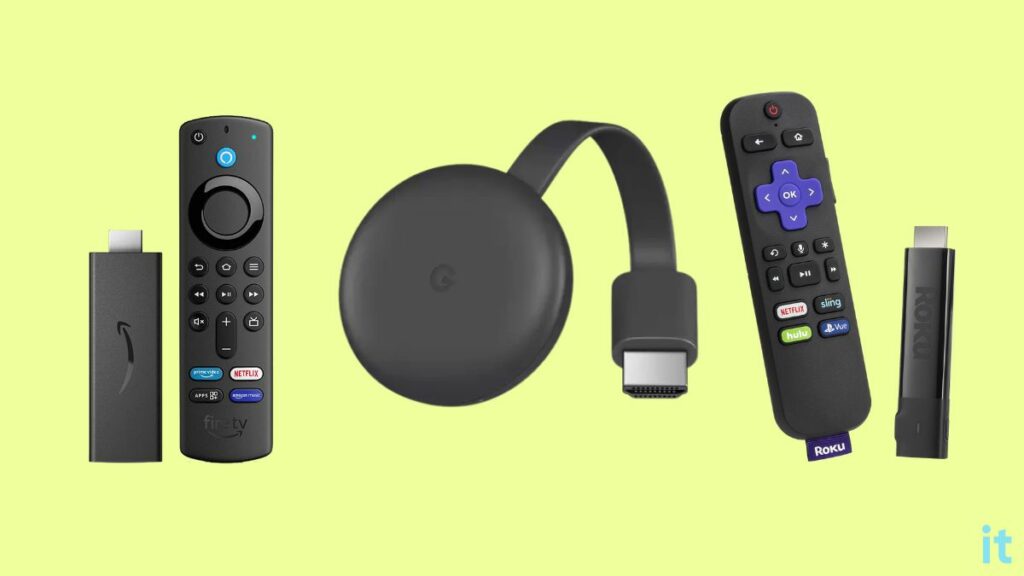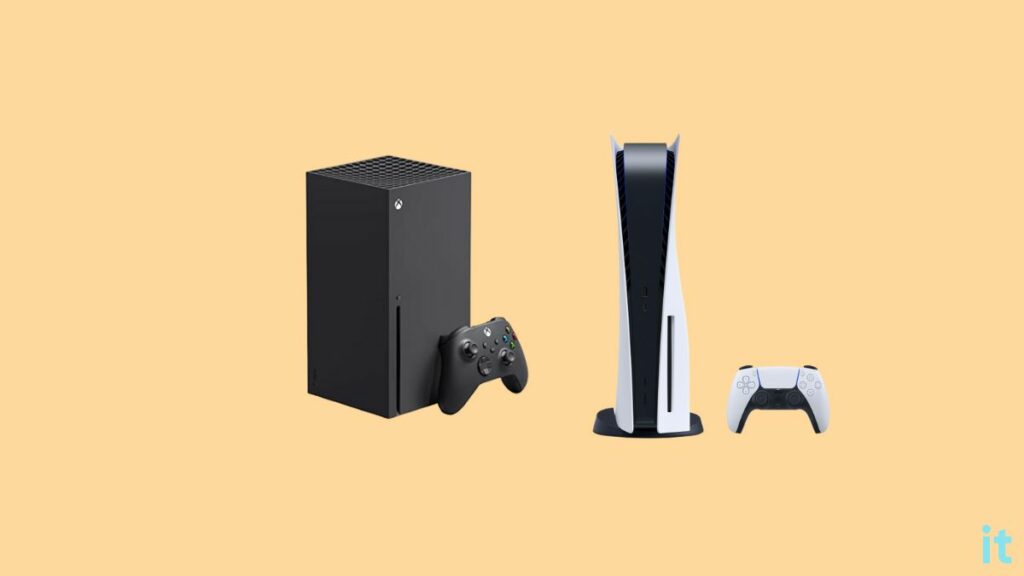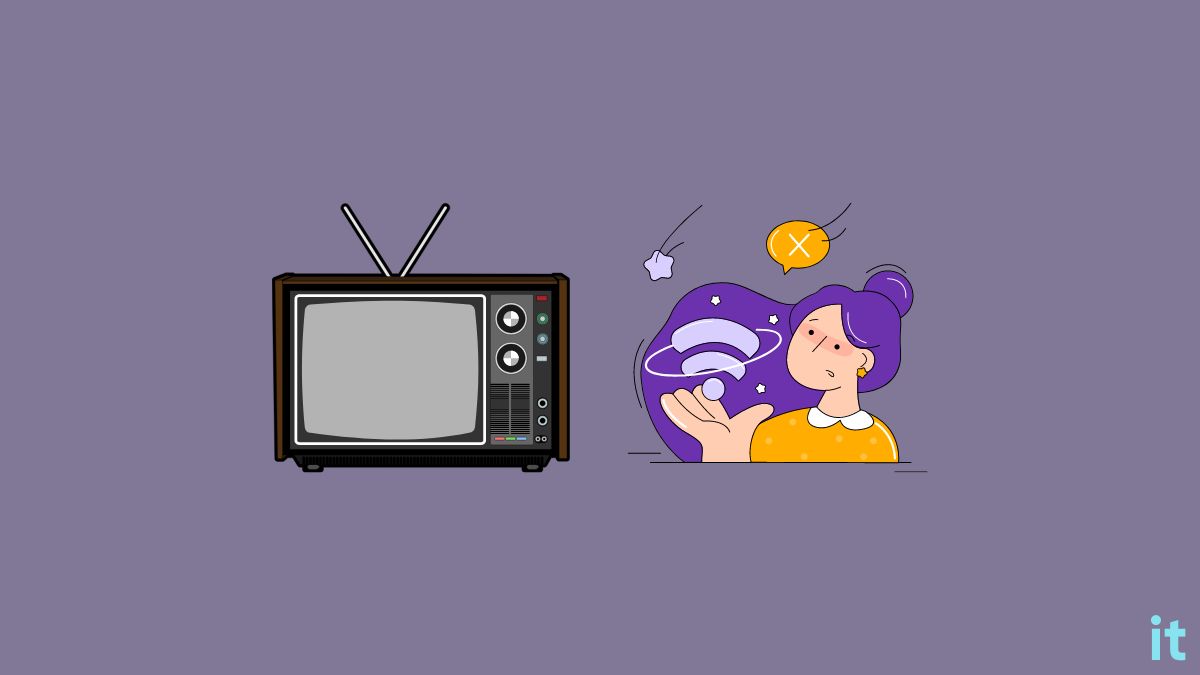You would be surprised to know there are several ways to connect a non-smart TV to WiFi. Not just connecting to WiFi, you can even get smart features like a smart TV.
The ability to connect the TV to WiFi is the most missed feature that non-smart TV owners face. Since the TV can’t be connected to WiFi, you cannot watch TV shows or movies from your favorite apps like Netflix, Prime Videos, Disney+, etc.
Below are some of the easiest ways to connect non-smart TV to WiFi in simple steps.
How To Tell If Your TV Has WiFi?
Before proceeding further, you should ensure that your TV really has WiFi or not.
Below are some ways to confirm if your TV has WiFi.
- Check TV Settings: If your TV has WiFi, you will find a wireless network/Internet/network settings on the TV Settings. Grab your TV remote, open settings and go through the menu, and see if you can find any options related to WiFi or wireless network.
- Check TV Box: If your TV has WiFi, the box should most probably highlight it as one of the main features. See if you can find a WiFi logo on the box in which the TV came.
- Refer to the TV User Manual: The TV user manual contains a guide on how to use the TV and sections explaining the main features of the TV. Go through the index page of the user manual and see if you can spot any WiFi or network-related options.
- Visit the TV manufacturer’s website: If you visit the TV manufacturer’s website and select your TV model, it will list all the highlighted features of the TV. Go through the list of features and see if your TV has WiFi.
If you are sure your TV does not have WiFi, follow the simple methods below to connect your non-smart TV to WiFi.
How To Connect Non-Smart TV To WiFi
To connect a non-smart TV to WiFi, you need a streaming device like the Fire TV Stick, Roku streaming stick, Chromecast, Apple TV, etc. Connect the streaming device to one of the HDMI ports on your TV and switch the input. Open the network settings and connect your non-smart TV to WiFi.
Before going in, make sure your TV has an HDMI port. If your TV is super old and does not have an HDMI port, you need to get a composite to HDMI converter or component to HDMI converter first.
Use a Streaming Device

Streaming devices connect to your TV’s HDMI port and turn your non-smart TV into a smart TV. Since these streaming devices have built-in WiFi support, you have easily added WiFi to your non-smart TV.
If you want to use your old TV as it is without connecting your laptop or phone, this is the best option.
There are a couple of great streaming devices with support for amazing apps and features.
All the above streaming sticks have WiFi and let you connect your non-smart TV to WiFi. And best of all, you have turned your non-smart TV into a smart TV.
I recommend using a Firestick to turn your non-smart TV into a smart TV and connect to WiFi, as it is cheap and straightforward to configure.
If your TV supports 4K, get the Fire TV Stick 4K.
Once you grab a streaming device, follow the steps below to attach it to your TV and connect it to WiFi.
Connect Streaming Device To Your TV
The first thing you need to do is to connect the streaming device to your TV.
Most streaming devices come with a power cable and a USB power brick in the box. Attach one end of the USB cable to the power brick and the other to the streaming device.
Plug in the power brick and turn it on.
Now connect the streaming device to one of the HDMI ports on your TV. If your TV has multiple HDMI ports, note the particular HDMI port to which you connect it. (Example, HDMI 1, HDMI 2, etc.)
You will need it in a later step.
Setup the Streaming Device and Connect to WiFi
Now that you have attached the streaming device to your TV, the next is to set up the streaming device so you can connect to WiFi. The minimum Internet speed for Firestick is as low as 10Mbps for 1080p streaming, so you don’t need a high-end Internet plan either.
Turn on the TV.
Use your TV remote and head to input/source settings.
Set the input source as the HDMI port to which the streaming device is connected. You can do it via the TV remote or the Input/Source button on the TV.
Now you will be taken to the streaming device setup screen.
Follow the on-screen instructions and complete the initial setup.
You will be asked to connect to WiFi somewhere during the setup process. You can connect your Firestick to the 5 GHz network.
Select the WiFi network from the list of available networks and enter the password. Tap the Connect button and wait a couple of seconds for it to connect to WiFi.
Once connected to WiFi, complete the rest of the setup process.
Now that your TV has WiFi access, you may install your favorite apps like Netflix, HBO Max, or Disney+ and start streaming any content of your choice.
Use a Gaming Console

Hooking up a gaming console to your non-smart TV is yet another way to connect your TV to WiFi.
Whether a PlayStation or Xbox, all these gaming consoles have built-in WiFi. You may connect it to your home network to access the Internet on a non-smart TV.
Below are some leading gaming consoles that you can use on your old TV:
- PlayStation
- Xbox
- Nintendo Switch
Popular streaming services like Netflix are available for PlayStation, Xbox, and many more.
Connecting a gaming console to your old TV has two use cases. The first thing is that you can use the gaming console to play your favorite games, and the second one is that you may use it to connect your TV to Wi-Fi.
Grab the HDMI cable and connect one end to the back of the gaming console and the other to the HDMI port on the TV.
Plug in both the gaming console and the TV and turn it on.
Switch the TV input source to the gaming console.
Set it up, and you are good to go.
Connect Your TV To Laptop/Computer
Not everyone will have a streaming device or may get one to connect the old TV to WiFi.
But most people will have a laptop or computer lying around.
Since your TV has an HDMI port, it is possible to connect your laptop or computer to your TV and access the Internet.
In simple terms, it is like connecting your laptop to an external monitor, but in this case, we connect it to the TV.
If you look at the ports available on your laptop, you will find an HDMI port. If you are a MacBook user or have a laptop without an HDMI port, you will need to get a USB type C to HDMI adapter to connect to the TV.
So, all you need to do is grab an HDMI cable and connect one end of it to the HDMI port on the laptop and the other end to the TV.
Open the TV settings and switch the input source.
Now connect your laptop to WiFi and stream TV content without external devices.
Connect A Blu-ray Player
Connecting a Blu-ray player to your TV is yet another way to add WiFi functionality to your non-smart TV. Most Blu-ray disc player comes with built-in WiFi and Internet support.
All you need to do is get a Blu-ray player from any popular brand and connect it to your non-smart TV using an HDMI cable.
If your TV does not have an HDMI port, use a component to HDMI or composite to HDMI converter and then connect the Blu-ray disc player to your TV.
Set up the Blu-ray disc player and connect it to a WiFi network. Start streaming your favorite show on streaming services, including Netflix, YouTube, Amazon Prime Videos, and many more.
Blu-ray disc players can be expensive for many. If you bump up your budget a little bit more, you can get a smart TV for almost the same price.
Cast Your Phone
Last but not least is to cast your smartphone on your non-smart TV and enjoy your favorite movie or show.
Casting your phone is the last and final resort if none of the other steps worked for you.
Since yours is a non-smart TV, casting your phone on TV is not easy.
A streaming device, USB cable, etc., are a few ways to cast. But to be honest, it is counterintuitive.
What’s Next?
Now that you got WiFi access on your TV, go ahead and download your favorite app and start streaming any TV show or movie of your choice.
Firestick is the cheap and best option to turn your non-smart TV into a smart TV.

